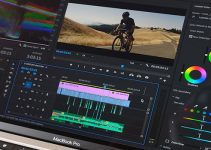When you start shooting with your brand new Panasonic GH5/GH5S, you may find that the video produced may not look as appealing and cinematic as you want it to be right off the bat. To be able to actually capture images that match your expectations, you may have to navigate through the various menus of the camera and fiddle with color parameters, resolution settings, and whatnot long before you get it rolling.
So, if you’re someone looking for the best camera settings to use for your GH5/GH5S, check out this video by Chrystopher Rhodes of YCImaging where the seasoned professional explains a few of the tweaks he makes on his GH5 to attain better cinematic-looking video.
First and foremost, Rhodes sets his record options to a custom preset that allows him to attain the most amount of image quality from his shots while keeping file sizes reasonable. For instance, he shoots 1080p 10-bit 4:2:2 video at 24fps while recording at 100Mbps.
Keep in mind that when filming at this quality level, you won’t have the option to shoot with variable frame rates. To re-enable this feature, you will have to select an alternative Recording Quality setting, forcing you to film in 8-bit instead of 10-bit.
When it comes to picture profiles, Chrys prefers to use two different presets – Cinelike D and V-Log L. For the former, he has the Contrast, Sharpness, and Saturation set to -5 whereas the V-Log L profile is usually kept at factory settings with all the parameters set to 0.
When using his GH5, Rhodes tends to operate the camera on some sort of a stabilizing system. For these occasions, he ensures that the camera’s 5-Axis Sensor Stabilization is switched on to be able to reduce unwanted jitters and shakes along the way.
Looking at exposure settings, the filmmaker sets his ISO Increments to 1/3 EV for more precise control over his exposure. In addition, the Extend ISO is enabled in order to have access to higher ISO increments, if and when he needs to raise the exposure for extremely low-light situations. Do note, however, that operating in high ISOs will lead to increased noise and potential color shifting. Overall, you should use this option only when it’s absolutely necessary.
Regarding focus settings, Rhodes doesn’t have any adjustments in this aspect of the camera as he often uses manual lenses. He does take advantage of Manual Focus Assist, though. When manually adjusting the focus ring, this feature aids by digitally magnifying the center of your image, helping you see whether or not your subject is actually in focus.
In addition to all the adjustments listed above, Chrystopher also enables several photo/video assist tools to aid in shot composition. For instance, he keeps Peaking and Zebras toggled on to help him identify areas of the frame that are overexposed. Occasionally, he also uses the grid lines alongside the center marker to frame his shots more precisely.
Even though Rhodes considers these settings to be the best in his use case, remember that you are still free to experiment with your own adjustments. To obtain the best-looking video out of your GH5/GH5S, you should take the time to play around with different picture profiles and parameters to figure out what actually works best for you.
[source: YCImaging]
Order Links:
Panasonic Lumix DC-GH5 Mirrorless Micro Four Thirds Digital Camera (Body Only) (B&H, Amazon)
Panasonic Lumix DC-GH5S Mirrorless Micro Four Thirds Digital Camera (B&H, Amazon)
Disclaimer: As an Amazon Associate partner and participant in B&H and Adorama Affiliate programmes, we earn a small comission from each purchase made through the affiliate links listed above at no additional cost to you.



